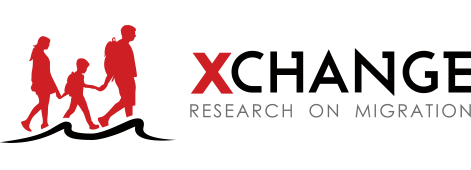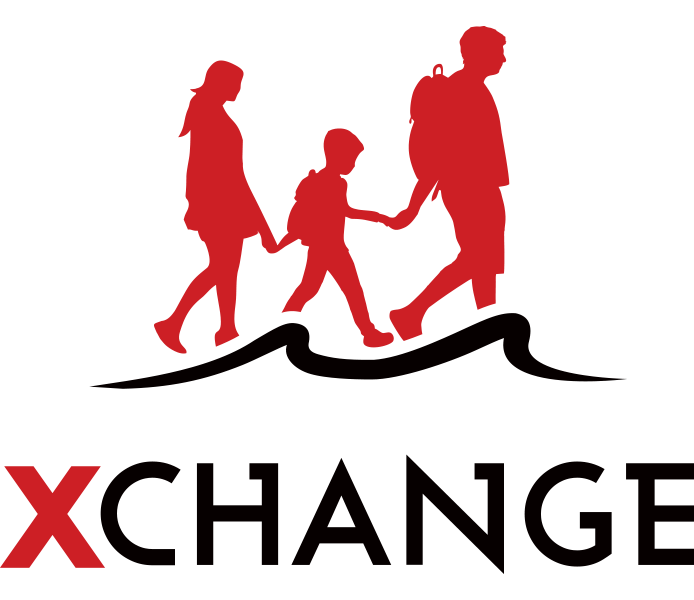Displacement and humanitarian crisis in Africa
Africa hosts over one-third of the global population of forcibly displaced persons. Due to protracted wars, conflicts and violence, political uncertainty, and climate change related disasters, 29 million people in Africa have been forcibly displaced from their homes. Of the 29 million, 72 percent are internally displaced persons (IDPs). What this data demonstrate is that the great majority of African refugee movements happen within Africa itself and the responsibility of caring for these migrants falls on neighbouring communities and countries. In the scenario in which the host country itself is already facing high levels of poverty, hosting additional groups of displaced people means that both the displaced population and the host population suffer due to a lack of resources and infrastructures.
In the region of Sahel and in Horn of Africa countries, such as Ethiopia and Somalia, conflict and violence are escalating, but the related displacement crisis, both internal and external, that is taking place is often underreported or not sufficiently addressed. Africa’s displacement crisis carries serious security implications and humanitarian consequences: displaced populations are more prone to food and water insecurity, reduced access to wash facilities and health services etc, and consequently they are subject to higher levels of mortality and malnutrition.
The United Nations, with its agencies and its partners, are working in tough conditions to offer emergency assistance to African refugees who continue to flee their countries in search of safety, a better life and opportunities. However, the recent covid-19 pandemic, growing political insecurities and extreme weather conditions in these regions continue to make the humanitarian response extremely complicated to manage.
The Sahel Region
The Sahel is an African region lying on the southern edge of the Sahara Desert and it cuts across several African countries including Burkina Faso, Niger, Mali, Mauritania and Chad. The Sahel is experiencing one of the world’s worst humanitarian crises with more than 12 million people in need of humanitarian assistance. Many different crises converge in the Sahel region – displacement and armed conflict, extreme poverty, climate-related shocks, and the latest covid-19 pandemic – worsening the already unstable security and humanitarian situation.
Much of the Sahel is now a danger zone and the population living in those countries is threatened by ongoing armed conflicts. Among the perpetrators of the violence are Islamist militants’ groups such as Boko Haram operating in Chad and Niger, the JNIM[1] linked to Al Qaeda and ISGS [2]an affiliate of the Islamic State, violent groups active in Mali, Burkina Faso and Niger. In the region, different armed groups have exploited political and ethnic tensions to massacre communities and raze entire villages. To escape the violence, people have been forced to flee their homes, leading the Sahel to become one of the world’s fastest growing displacement crises: 2 million people are now displaced within their own countries.
The United Nations have repeatedly expressed their concerns over the unfolding crisis and its devastating effects on the population, especially on children. Due to the widespread violence and insecurity, basic social services are all but non-existent in the Sahel region and many schools are either closed or non-operational. Poverty and a chronic food crisis add to the spread of armed violence characterising the Sahel: millions of children are suffering from severe acute hunger and malnutrition. Predictably, the devastating effects of climate change have made the situation worse: extreme hot temperatures are shrinking arable land, harvests are poor and flooding and drought force people to flee across borders moving from one conflict to another.
Tigray
Tigray is the northernmost region in Africa’s second most populous country, Ethiopia. Tensions between the Ethiopian government ruled by Abiy Ahmed, a Nobel peace laureate, and the Tigray People’s Liberation Front (TPLF), date back to 2018 and escalated into war in November 2020.
The TPLF, an armed political movement, played a vital role in the country’s recent history having ruled Ethiopia for almost 30 years and having always held outsized power in the military, business, and politics. The Tigrayan regional administration rejected the indefinite postponement of the August 2020 national elections due to the Covid-19 pandemic: it held regional elections in September 2020, and it was declared winner of all regional parliament seats. To oust the powerful regional government, the Ethiopian central government immediately called the elections illegal, it suspended funds for and cut ties with the TPLF. All the attempts to mediate between the parties were unsuccessful, tensions escalated into a war which spread in the entire region and beyond its borders, destabilizing the Horn of Africa.
As is often the case in war, the most vulnerable people bear the brunt of the conflict. This conflict has displaced hundreds of thousands of people and rattled the region. There have been civilian casualties, including non-military targets such as schools, places of worship and medical infrastructures. Although the conflict slowed down in December 2020, its impact on the Tigrayan population has been dramatic, with more than 1 million of internally displaced people (IDPs) and countless women and girls that have been raped by members of the Eritrean Defence Force, the Ethiopian National Defence Force and the Amhara Regional Police Special Forces. According to Amnesty International’s report, “given the context, scale and gravity of the sexual violence committed against women and girls in Tigray, the violations committed may amount to crimes against humanity”.
Tigray is under a state of emergency: people are dying of starvation; levels of food insecurity and malnutrition are alarming; aid workers are denied access to refugee camps by the federal government; humanitarian assets and supplies are confiscated by the parties to conflict; communications are interrupted; hospitals and health facilities continue to receive and treat survivors of gender-based violence. The Tigrayan Region is suffering and although the humanitarian partners are gradually scaling up the response, they are not keeping up with the mounting needs.
Somalia
Somalia is facing a significant humanitarian challenge with an estimated 5.9 million people in need of humanitarian assistance – almost half of the Somali population, and an estimated 2.6 million people internally displaced. Since the military dictator Siad Barre was deposed, ongoing conflicts, climate-related shocks, communicable diseases outbreaks and lack of state protection have contributed to the deterioration of humanitarian conditions and have exacerbated humanitarian needs among the Somali population which was already living under the strain of widespread poverty and decades of armed conflict and insecurity.
Terrorism is one of the biggest factors threatening the (political) security of the country. The Islamist terrorist group Al-Shabab is destabilizing the Horn of Africa Region, carrying out massive deadly attacks both in Somalia and in surrounding countries and kidnapping and forcefully recruiting children, despite the efforts and the military offensive carried out by the African Union forces.
In addition to political uncertainty and conflicts, Somalia is now on the brink of severe food insecurity due to climate change and its unpredictable associated impacts: over the last year, Somalis have endured repeated famines, prolonged droughts, severe heat waves and deadly flooding that impacted more than 105.000 people, inundated farmlands, damaged crops and infrastructures, and displaced entire communities. Floods are deadly, but their aftermath can be even worse as the risk of water-related disease (e.g. diarrhoea and cholera) increase and access to safe clean water is compromised.
As if this was not enough, in the last year Somalia has been experiencing a major political stalemate, the worst desert locust infestation in 25 years which posed a serious threat to farmers and their crops, and a rapidly-escalating coronavirus outbreak which caused more than 900 deaths and which placed extra pressure on Somalia’s already malfunctioning health system.
5.9 million people are in desperate need of humanitarian assistance and the European Union, through its humanitarian funding, allocated €45.3 million for humanitarian projects in Somalia and is helping aid organisations in loco to provide life-saving assistance to vulnerable Somali people. Notwithstanding these efforts, insecurity and political instability impedes access for humanitarian organisations to the country, and the humanitarian support offered by international and non-governmental organisations is not enough: Somalia needs long-term solutions to the multiple crises it is facing.
Final considerations
Humanitarian needs in Africa continue to be on the rise and political insecurity, disease outbreaks, poverty, malnutrition, and food shortages are some of the causes that lie at the basis of internal displacement and consequent international humanitarian interventions in the continent.
In sum, the surge of African internal displacement is multi-layered and the future efforts of the international community in Africa should focus on tackling the drivers of the displacement and on humanitarian assistance targeted to providing vulnerable communities with shelters and nutritional assistance, as well as access to proper health care and education systems.
[1] Jama’a Nusrat ul-Islam wa al-Muslimin’, a militant jihadist organisation in the Maghreb and West Africa
[2] The Islamic State in the Greater Sahara, a militant group active in Mali, Niger and Burkina Faso’s borders



